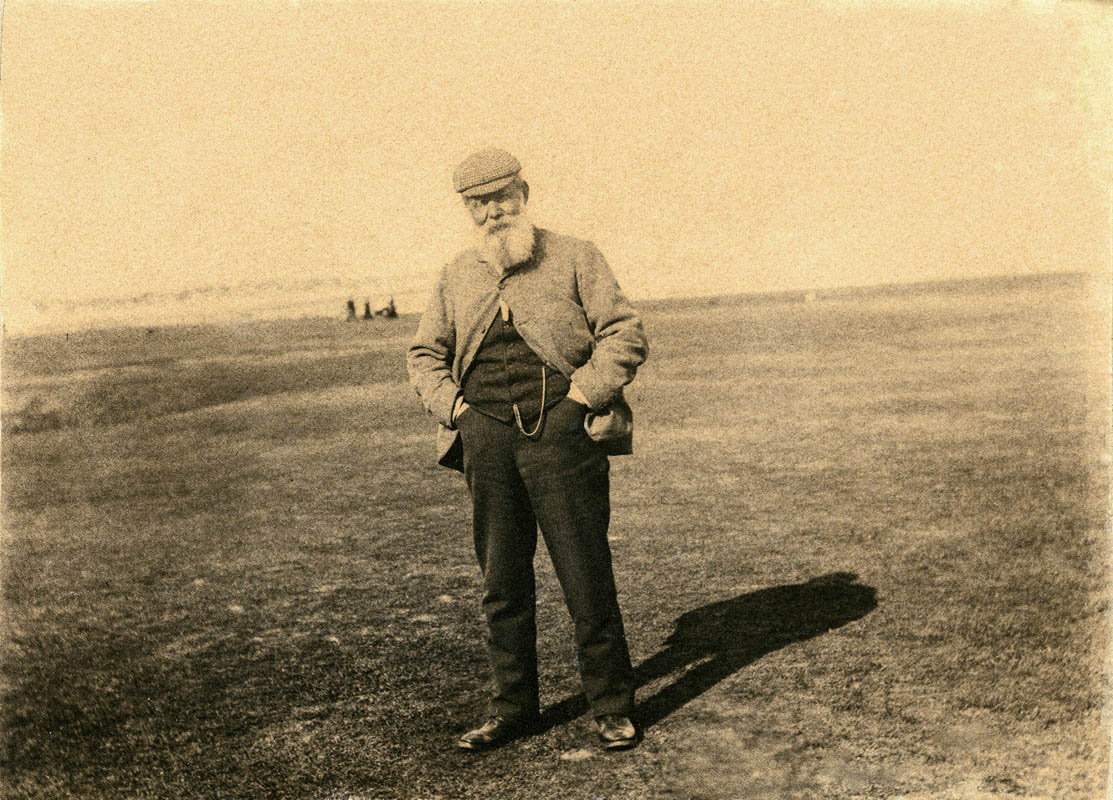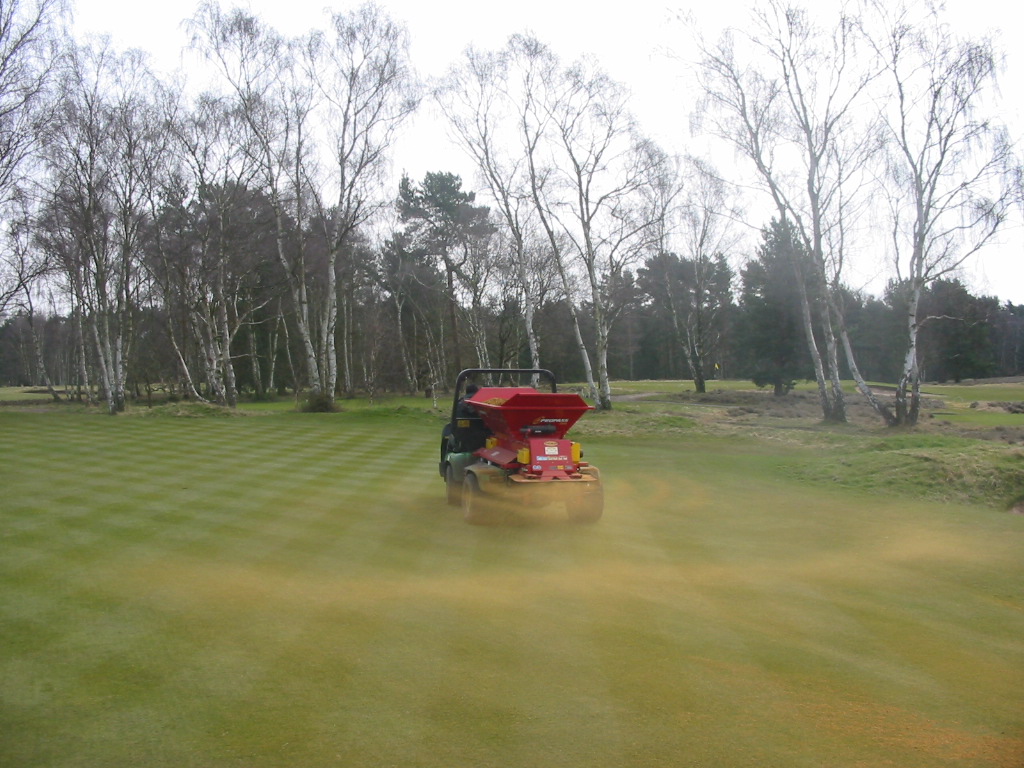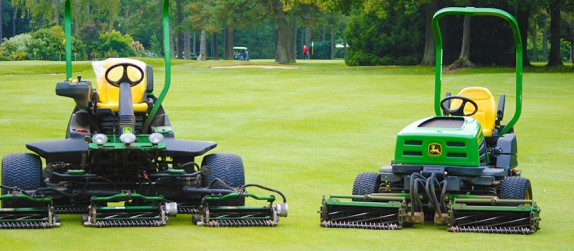Column | The Greenkeeper Writes
Published on August 1, 2018Green, Green Grass of Work

There are some questions in life where we will never know the answers, for example, questions like, is there intelligent life in outer space? Is it wise for people expecting an important phone call to go to a movie theatre? Some are questions we don’t really want to know the answers to; like what did the cook touched before he kneaded the roti canai? What does the kitchen at your favourite kuey-teow shop look like? And yet, there are things we don’t know that perhaps we should know, like the items on the hospital bill or the people behind the maintenance of a golf course. These are the people behind the scenes, sometimes with disturbingly noisy machines who take care of the huge playground called a golf course.
Who are the people maintaining the golf course? Strangely enough, these are answers golfers are usually interested to know only when the golf course is not in its best condition. When a finger needs to be pointed at someone, that is when golfers want to know, who, that ‘someone’ is. When the golf course is in good condition, the golfers will just take it for granted.
The person directly in charge goes by different titles, usually depending on the golf course size, from Supervisor to Director, there are many other variations like Course Executive to Course Manager to Course Superintendent. But the most commonly used title is “Golf Course Superintendent”. Overseas some people refer to them with the generic title of “Greenkeeper” though in Malaysia it gives the impression of something like the “Goalkeeper” or something so is not often used. Sometimes the Club Manager looks after the golf course, or the General Manager, or Pro or even a bunch of people called the Greens Committee or Golf Committee.
Many of the “Greenkeepers” in our local courses rose up through rank and file. Some come from related backgrounds like horticulture or landscape gardener. Some come from agricultural backgrounds like plantation management. And yet, there are others who come from different backgrounds like machinery mechanics or former soldiers or police officers. Gender is not an issue; women make competent Greenkeepers too. The job is mostly about brainpower, not muscle power.
What do the people looking after your golf course need to know? Well, it is said that greenkeeping is part art and part science. So I suppose a good greenkeeper is part artist and part scientist? In a way, he (or she) is a little bit of an artist. Having to present the golf course in a certain way, with the fairway striping, the rough profiling, the landscaping, and the shrubs, right down to the manicure of the grass beside the bench at the par-3s. It does take some artistic flair to accomplish it.
It’s mostly science, some biology, some chemistry, some physics and lots of common sense coming together. You would need to know a little bit about agronomy and some plant physiology. And just like us humans (if there are any aliens reading this, sorry!) needing our vitamins C, D, B complex, A, E and many more, so do plants and turfgrass have their own needs in the form of Nitrogen, Phosphorus, Carbon, Hydrogen, Oxygen and 10 or 11 more elements. And these are the times when you need a little knowledge of chemistry, to understand how these nutrients bind or repel each other, or how they affect other processes in the soil or in the plant itself. Some knowledge of pathology (diseases) and entomology (insects) would be beneficial too.
Some people call us turf doctors, but we are more than just looking after the health of the turf. With millions of Ringgit worth of machinery, we need to have some mechanical knowledge beyond just starting the engine. And with between 3 to 300 workers in the maintenance department, the person definitely needs to have some Human Resource knowledge as well; with unions in the picture, some industrial relations too. And since we are on the subject of relations, he or she needs to have good public relations abilities also, with the golfers, the public and of course, the media.
Now then, how did cutting grass become so complicated? Golf in its early days in Scotland in the 14thor 15thcentury probably didn’t even involve any grass cutting. Playing on the Links on grass eaten by sheep and holes dug by rabbits, hitting pebbles with shepherd crooks or walking sticks, it was surprising that golf became so popular. King James III in 1457 actually banned the game because it interfered with the duties of the day (don’t give your boss any ideas).

Old Tom Morris
The Royal and Ancient Golf Society of St. Andrews, formed in 1754, formalised the game by creating a small number of basic rules. In its most basic form, the game consisted of a course, implements (clubs) and a ball. The balls and implements were fairly standard, but the courses varied significantly depending upon rainfall, wind, and types of grass, land features and the presence of grazing animals (the first grasscutters!).
The Royal Burgess Golfing Society minutes indicate that in 1774, a boy was engaged as “our cady” and considered the first “greenkeeper” with a remuneration of six shillings per quarter year and a suit of clothes. From 1809 to 1820, a person was employed with the title of clubmaker and officer, as well as assistant in keeping the green. However, in 1866 a council made up of two members of each of five clubs was appointed to take charge of the green and pay a person jointly to look after the course. A motion was carried that a professional golfer be employed as a servant of the club and the entire charge of the course be entrusted to him. A man named Tom Morris was introduced, and his duties explained. “Olde Tom Morris” as he became known, went on to take care of the course for the next 40 years until his retirement around1906 and a lot of his basic maintenance practices are still in use till today. Legend has it that while transporting sand across a green, some of it was spilt on the green and to clean it, the sand was rubbed in instead of collected. Old Tom observed that the area where the sand was spilt had grown more grass and thus “topdressing” with sand has been a common practice ever since.

Top dressing greens
As the popularity of the game increased, the rules became more formalised and so did maintenance of the course. And just as the game itself changed, so did the role of those in charge of the playing field. Maintaining a golf course in excellent playing condition while permitting continuous use by golfers in weather that changed continuously and unexpectedly, demanded knowledge of turfgrass and effective management methods.
Early Greenkeepers were mostly from Scotland, in fact, it is said that at one time being of Scottish origin was one of the criteria for being a Greenkeeper in America!
Believe it or not, the earliest golf courses in America began in the 1890s while the golf courses in Malaysia started about twenty years earlier. Though the locals provided the manpower, the expertise presumably came from the “orang puteh”. A tradition that continued for a long time after that. A few nine-hole golf courses were built and maintained by plantation companies with the expertise of the planters themselves.
So what qualities make a person a suitable Greenkeeper? Well, he or she has to love the outdoors. Somebody who doesn’t want a tan or who thinks that too much rain will cause a fever should not bother. It should definitely be a person who doesn’t mind getting his or her hands dirty. Somebody fit and healthy; you’ll be on your feet half of the day. It has got to be more than someone who loves nature; somewhat a naturalist or maybe even an environmentalist. Managing a golf course is also about taking care of the environment so people who don’t think twice before spraying any chemical or throwing used oil out the back door should think twice before applying. With the introduction of IPM (integrated pest management) and biodegradable oils, better education and better understanding, there is hope for the environment as far as the golf course is concerned. But we still have a long way to go and much more to learn. But that is material for another article…
A good Greenkeeper should be a golfer or someone who understands the rules and game of golf. Golf is a serious game nowadays. Things that golfers of old did not mind are of serious concern to most golfers now. Consistent green speed from one green to the other, pin placement, soggy fairways and tall rough are just some of the things that come to mind. The Greenkeeper must know what bothers, what helps, what’s unfair and what’s unethical in this game. It’s partly the knowledge of the game of golf and mostly just pure old common sense.
A modern Greenkeeper needs to know computers too, beyond the ordinary word processing or spreadsheet software. There is software in the market that are dedicated to just the golf course industry. There is software for databases, for the stock in the store, machinery in the workshop and workers in the field. There are now computer-based irrigation systems that control the watering on the golf course, depending on how much moisture is in the ground, what kind of wind speed and what kind of grass. A modern dedicated mechanised chemical sprayer may have an on-board computer calculating stuff like how much chemicals go out at what rate and what the Greenkeeper should be wearing to the party next weekend (Ok, just kidding on the last one).
It may not be voted the most exciting job in the whole world, but it has its moments. You have the biggest office in the club – anything from 50 to 1000 acres – and you probably have the biggest accountability of all managers below the CEO too. And depending on golf course condition, you are the most liked (even if they don’t know your name and it’s the boss who gets the credit) or the most hated person at the end of somebody’s golfing day.

From the boardroom to the field, from ultra modern multi-coated fertiliser to just plain old dried chicken dung, from a computerised machine to a cangkul, from overseeing a degree-holder to supervising a bunch of illiterate workers, it’s a different job from most. Most golfers don’t know you and ignore you when they meet you on the course (unless its an election year), but you still get to know people if you make an effort. For a job that entails literally watching grass grow, it is pretty interesting stuff, it could have been a more tedious job, like, watching paint dry…
Please note that this article is not for work reference but just for some fun reading by golfers and the lay public.